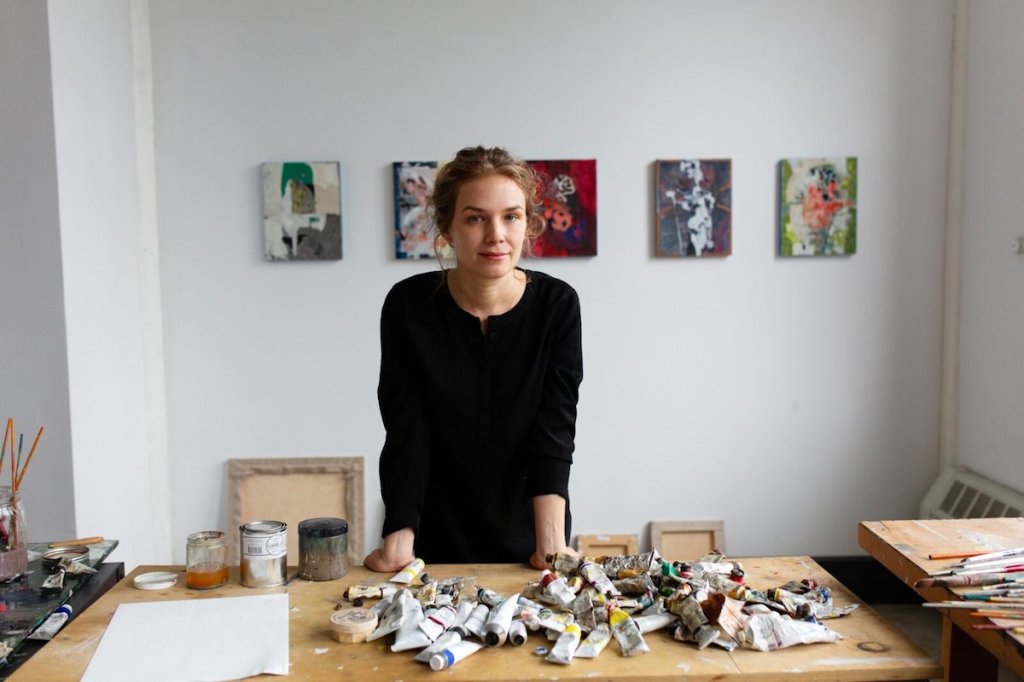Lumin Wakoa, a rising painter whose art was part of a quest to better learn how to see the world around her, has died at 43. Her death was announced by her gallery, Harper’s, on Monday.
Her husband Hendrik Gerrits wrote on Instagram that she had been battling brain cancer. “She could summon wildlife by sheer force of will – to adventure with Lumin meant swimming with wild dolphins, playing with manatees, and spearing gigantic lobsters,” he wrote. “Most importantly, she was the most loving, joyful, and patient mother. She taught me the daily skill of sitting still to delight in the wonder of our daughters.”
Related Articles

In a separate Instagram post, Harper’s wrote that Wakoa “was at the beginning of a truly special career.”
Wakoa’s paintings drifted between abstraction and figuration, and often were based on sights she had seen: half-remembered bouquets, leafless trees, forests stuffed with greenery. Many of her works feel hazy and unresolved, as though they were memories already on the verge of being forgotten.
At the time of her death, her career was ascendant. Last year, she had solo shows at Various Small Fires in Seoul and Harper’s in New York. The year before that, she exhibited with in Los Angeles with Various Small Fires, which also brought her work to two editions of the Frieze art fair, and in London at Taymour Grahne Projects.
Unlike most painters, Wakoa did not sketch her images in advance. “When I start a painting I have a very clear memory in mind,” she told Maake. “Usually this memory is something ephemeral and something that quite possibly rejects imagery. For instance, I started a painting wanting to capture being inside on a warm day when the light starts to turn cool and seeing dust suspended in the air. That moment of stillness thats sharpened by the subtle movement of particles in the air extends and lasts in memory; that’s what I’m looking for.”
During the pandemic, with the world briefly brought to a standstill, she began working from direct observation. “For me, painting from life is incredibly freeing,” she told Vogue in 2021, describing trips to a cemetery near her Brooklyn home.
The surfaces of her paintings were rough. In the Maake interview, she described applying her paint to linen on panel that she had gessoed several times. Then, once she had finished adding paint, she sanded down her surfaces. “I find it more exciting to respond to shapes and marks that are placed on the canvas, editing them over time, than to plan every move ahead of time,” she said.
Such an unusual process caused the artist’s work to appear ambiguous. “Though Wakoa’s impetus is clearly the stuff of the outdoors, the kind of space the paintings evoke is compellingly imprecise,” Elizabeth Buhe wrote in the Brooklyn Rail. “We are in both a forest and underwater, in the tangible space of lived experience and in the fleeting, shifting space of the imagination.”
Lumin Wakoa was born in 1981 in Ashland City, Tennessee, and raised in Wakulla County, Florida. “As a child,” Buhe wrote in a 2022 essay for a Harper’s show, “Wakoa often sat with her father on the front porch of their home in northern Florida. ‘Let’s see,’ her dad would say, inaugurating a meditative exercise in looking, the goal of which was to unname the whole world.”
Wakoa herself described growing up in a “fantasy world” that was rooted in her Floridian reality, with a 65-foot-deep sinkhole behind her house acting as a pool for her and her family.
According to an obituary for the artist, she studied drama at the North Carolina School of the Arts, then took a gap year to sail around the Bahamas. She then studied biology and art at the University of Florida in Gainesville, graduating with a bachelor’s degree in 2005. She received an MFA from the Rhode Island School of Design in 2010.
In 2021, Wakoa’s work began to take a darker turn. She began to paint skeletons, which appear amid what seem to be rosebushes and flowers. But in the years afterward, she returned to her bright blooms, painting them at a large scale.
She often spoke of her process as being mysterious—even to herself. “I still have to ask myself what I want out of a painting?” she told Maake. “A painting I’m looking at, a painting I’m making…that question for me is complex and illusive; it keeps me right at the edge of my seat.”

